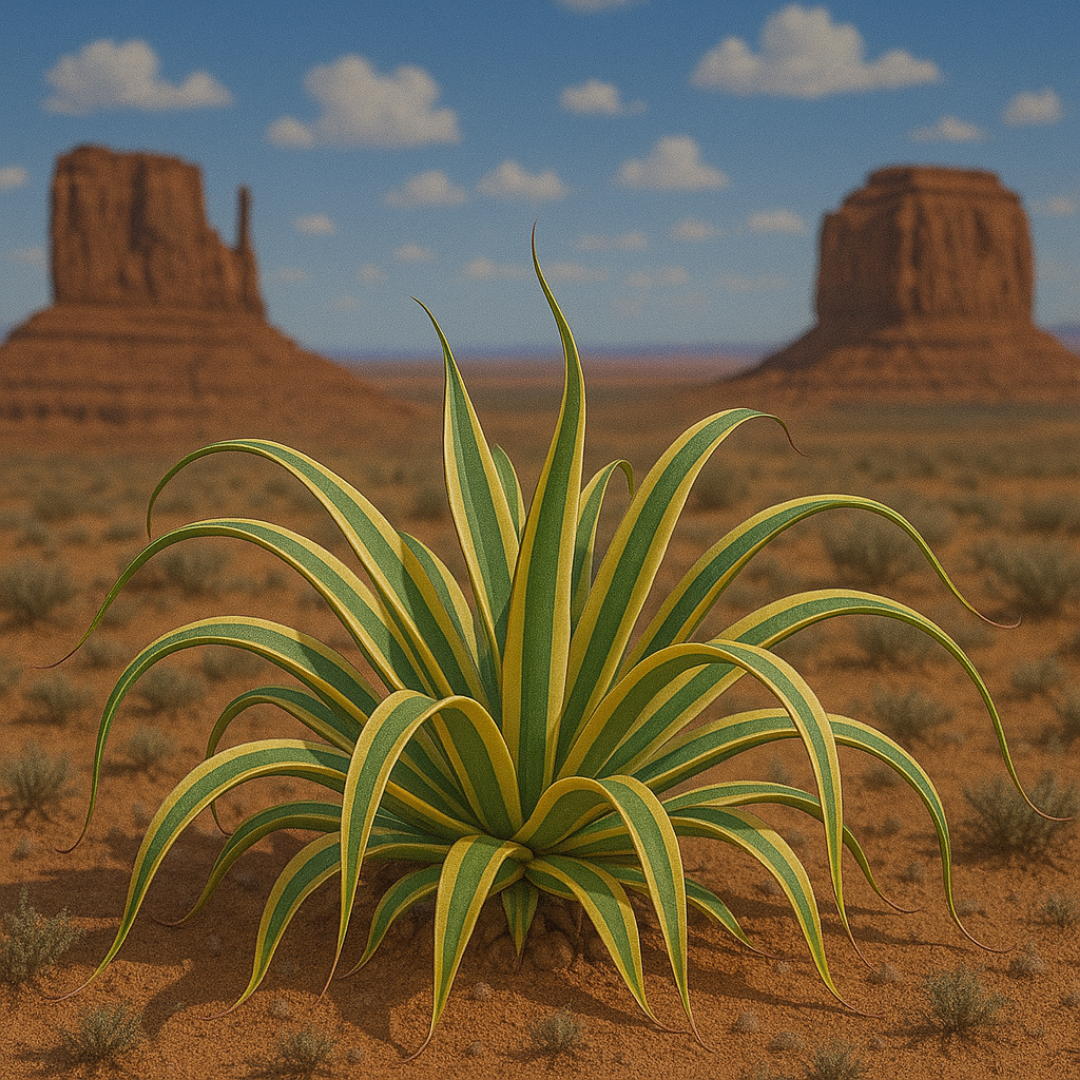My Store
Variegated Octopus Agave
Variegated Octopus Agave
Couldn't load pickup availability
Plant Type: perennial, succulent
Plant Height: 3-4 feet
Spread: 4-6 feet
Flower Color: yellow
Sun Exposure: Full sun, Partial Shade
Variegated Octopus Agave / Agave vilmoriniana ‘Stained Glass’: Bold Striped Sculptural Form
Agave vilmoriniana ‘Stained Glass’ (Variegated Octopus Agave) is a striking cultivar that combines the dramatic, curving “tentacle” foliage of the classic Octopus Agave with creamy yellow margins or marbling, creating high-contrast visual interest. This variety unfolds in a loose, undulating rosette of narrow leaves edged in light tones, making it an outstanding specimen plant in arid and rock garden settings.
Key Features of Variegated Octopus Agave
The plant forms a solitary rosette with elongated, slightly wavering leaves. The variegation displays as creamy-yellow margins or streaks against the green center, giving an almost glowing effect under sunlight. Its leaf edges are usually smooth or with fine serrations, and the leaves arch and twist gracefully. After many years, it sends up a tall flowering stalk bearing yellow blooms and then concludes its life cycle, though it often produces bulbils on the stalk for propagation. The variegated coloring remains relatively stable in strong light, though protection in extreme heat helps preserve contrast.
Growing and Care Tips
This cultivar prefers full sun but tolerates light afternoon shade in very hot climates. It demands excellent drainage in a sandy or gravelly soil mix to prevent root issues. During its first growing season, apply light, infrequent watering to encourage roots without saturating the soil. Once established, reduce watering significantly and allow the substrate to dry thoroughly between cycles. Avoid deep planting, as burying the crown too deeply can lead to rotting. Fertilizer is rarely needed; a mild application of cactus/succulent formula in spring may be used sparingly. It thrives in warm, dry regions and should be guarded from severe cold or repeated frost.
Landscaping Uses
Variegated Octopus Agave excels as a focal point in minimalist, modern, or rock gardens. It is ideal for accenting pathways, gravel beds, or containers where its form and pattern can be appreciated up close. Pair it with darker succulents or contrasting textures to highlight its glowing edges. Because of its open form and dramatic shape, it works well spaced as a feature plant or grouped with complementary dry-garden species.
Summary
The variegated Octopus Agave brings sculptural elegance and eye-catching contrast to arid landscapes. Its graceful leaf motion, bold striping, and low-maintenance nature make it a standout choice for gardeners seeking visual impact in extreme climates.
Three Timbers Installation Guide (Feel Free to Follow):
Variegated Octopus Agave Planting Guide:
Location: Full sun to partial shade (ideally at least 6 hours of direct sunlight; dappled afternoon shade helps in extreme heat)
Soil: Extremely well-drained, sandy or gravelly mix is essential to prevent water retention and root rot
Spacing: Space plants 4–6 feet apart to allow their leaves to arch and twist without crowding
Planting Depth: Position the crown at or just above soil level — avoid burying
Support: No staking required; naturally stable rosette
Watering Guide:
Watering After Planting: Water thoroughly once to settle the root ball, then wait until most of the soil is dry before watering again. During the first 2–3 months, irrigate lightly every 10–14 days, adjusting for heat and rainfall.
When is the Plant Established? This cultivar is generally considered established after 6–12 months, when the root system fills into surrounding soil and new growth becomes consistent.
Watering Once Established: After establishment, water sparingly. In summer, water only during extended droughts (every 3–4 weeks). In cooler months, supplemental irrigation is seldom needed.
Drip Irrigation Setup: Place emitters 12–18 inches from the rosette center to keep the central base dry. Use low-flow emitters (0.5–1 gph) and allow soil to dry fully between watering cycles. One emitter per plant is typically adequate.
General Watering Tips: Always check soil moisture before irrigating — allow the top few inches to dry thoroughly. Avoid overwatering, which can cause rot. Use coarse rock or gravel mulch to conserve moisture and suppress weeds, keeping it clear of the rosette base for airflow and health.
Share














